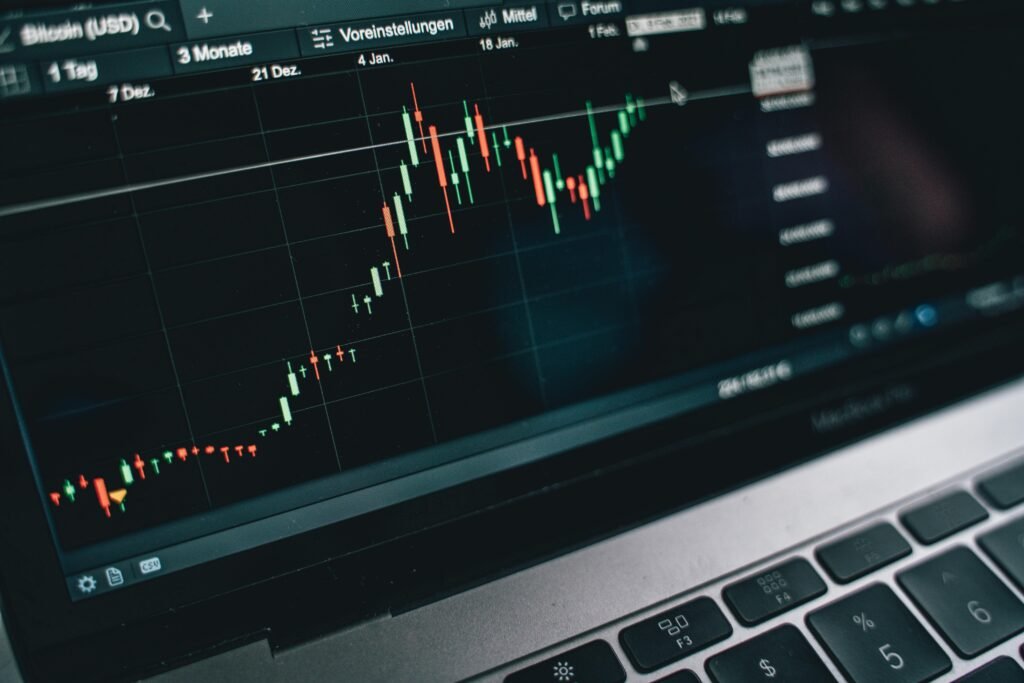Introduction to Kraken
Founded in 2011 by Jesse Powell, Kraken has evolved into one of the premier cryptocurrency exchanges globally. Initially launched to improve the transparency and security of bitcoin transactions, Kraken has expanded its mission to encompass a wider range of digital assets and services. The platform’s goal is to provide a reliable and user-friendly experience for both novice and experienced traders. Over the years, Kraken has established itself as a trusted name within the cryptocurrency community, renowned for its robust security features and commitment to regulatory compliance.
As of 2025, Kraken boasts a significant global presence, catering to users from over 190 countries. The exchange supports a diverse array of cryptocurrencies, offering trading pairs that cater to various strategies and preferences. Users can trade major assets like Bitcoin and Ethereum, as well as emerging altcoins, effectively facilitating a dynamic trading environment. Additionally, Kraken provides various services such as futures trading, margin trading, and staking, further enhancing its appeal to serious traders looking to maximize their investment opportunities.
Kraken’s reputation is largely built on its dedication to customer security. The platform employs advanced security measures, including two-factor authentication, cold storage for the majority of customer funds, and consistent security audits to protect against potential breaches. This diligent approach has helped Kraken earn a place as one of the most secure exchanges available today.
In summary, Kraken’s founding principles and ongoing growth reflect its commitment to providing a secure and versatile trading platform for users across the globe. As the cryptocurrency market continues to evolve, Kraken stands poised to embrace new challenges and opportunities, solidifying its position as a leader in the industry.

User Interface and Experience
The user interface (UI) of Kraken is designed to cater to a diverse audience, ranging from novice traders to seasoned professionals. The platform presents a clean, intuitive layout that prioritizes ease of navigation while effectively supporting complex trading activities. On both mobile and desktop platforms, users will find that the design is streamlined, making it simple to access various features without feeling overwhelmed.
For new users, Kraken provides an onboarding experience that includes helpful tutorials and guides, facilitating an enjoyable introduction to cryptocurrency trading. The platform’s user experience (UX) is enhanced by its responsive design, ensuring that all functionalities are easily accessible across different devices. Mobile users will appreciate the well-optimized trading app that retains essential features, allowing them to monitor the markets and execute trades on the go. The app’s straightforward navigation mirrors that of the desktop version, ensuring consistency in user experience.
Experienced traders will find Kraken’s advanced trading tools helpful in executing their strategies. Features such as detailed charts, diverse order types, and customizable views enable traders to analyze market trends effectively. The comprehensive trading dashboard consolidates important information, allowing users to track their portfolio performance, recent trades, and market activity efficiently. Moreover, the easy-to-use interface enables quick transitions between different cryptocurrencies, making it simple to adapt trading strategies as market conditions change.
Overall, Kraken’s user interface and experience stand out due to its balance between accessibility for beginners and advanced functionalities for professional traders. The ongoing enhancements to the platform demonstrate Kraken’s commitment to creating a user-friendly environment that meets the evolving needs of its customer base.

Security Features
Security is a paramount concern for users engaging in cryptocurrency exchanges, and Kraken has made significant investments to ensure the integrity and protection of user data and funds. One of the foremost measures employed by Kraken is the implementation of two-factor authentication (2FA). This feature requires users to provide a second form of identification, typically through a mobile application or text message, in addition to their password. By requiring this extra step, Kraken mitigates the risks associated with unauthorized access.
In addition to 2FA, Kraken employs cold storage options for the majority of user funds. Cold storage involves keeping a substantial portion of assets offline, thus protecting them from potential online attacks. This strategy significantly reduces the risks posed by hacking incidents, which have affected many exchanges in the past. Only a minimal amount of funds necessary for day-to-day operations is held in hot wallets, which are kept accessible online.
Another essential aspect of Kraken’s security framework is its insurance policy. Kraken provides coverage for certain types of assets held within their hot wallets. This policy serves as an added layer of reassurance, ensuring that users have some degree of protection in the unfortunate event of a security breach. Furthermore, the company adopts industry-standard security practices, including regular penetration testing and data encryption, to protect user information.
It is also pivotal to discuss the history of security incidents associated with Kraken. While no platform is immune to threats, Kraken has demonstrated resilience by addressing past vulnerabilities transparently and swiftly. This proactive approach to security is crucial for instilling confidence among users concerned about the safety of their investments. Overall, Kraken’s robust security features make it a safe choice for traders looking to engage with cryptocurrencies.

Supported Cryptocurrencies and Trading Options
Kraken has established itself as one of the premier cryptocurrency exchanges in the market, renowned for its vast selection of supported cryptocurrencies and diverse trading options. As of 2025, Kraken supports a wide range of cryptocurrencies, including major assets such as Bitcoin (BTC), Ethereum (ETH), and Litecoin (LTC), along with numerous altcoins like Cardano (ADA), Polkadot (DOT), and Chainlink (LINK). This extensive variety ensures that traders have ample opportunities to invest in various digital assets, catering to both novice and experienced traders.
In addition to spot trading, Kraken provides a suite of trading options tailored to meet the diverse needs of its users. Spot trading on Kraken allows traders to buy and sell cryptocurrencies at the current market price. The exchange also offers futures trading, which enables users to buy or sell contracts based on the future price of a cryptocurrency, giving traders the potential to profit in both rising and falling markets. This feature is particularly valuable in a dynamic market environment where price volatility is common.
Another significant aspect of Kraken’s trading offerings is its margin trading option. This allows traders to leverage their positions by borrowing funds to increase their purchasing power, thus potentially maximizing their returns, albeit with higher risks. Furthermore, Kraken provides unique offerings such as staking, where users can earn rewards by holding specific cryptocurrencies on the exchange. This feature has gained popularity as it allows traders to generate passive income on their investments.
Additionally, Kraken continually updates its platform with new token listings, allowing traders to access the latest digital assets in the market. This commitment to expanding their cryptocurrency offerings not only enhances Kraken’s competitive edge but also aligns with the evolving needs of the trading community.
Fees Structure
Understanding the fee structure of a cryptocurrency exchange is paramount for traders looking to maximize their investments. Kraken, renowned for its reliability and security, has implemented a transparent fee system that is competitive compared to its major counterparts. The fee structure at Kraken comprises several components, including trading fees, withdrawal fees, and any potential additional charges that users may encounter.
When it comes to trading fees, Kraken utilizes a maker-taker model. The trading fees are tiered based on the 30-day trading volume, with makers paying a lower fee than takers. For instance, fees can range from 0.00% to 0.26% depending on trading volume. This tiered structure allows frequent traders to significantly reduce their fees, making Kraken an attractive option for active users. In comparison to other major exchanges, Kraken’s fees are considered to be on the lower end, offering significant savings for high-frequency traders.
Withdrawal fees also contribute to the total cost of using Kraken’s platform. For most cryptocurrencies, Kraken employs standard network fees that are variable based on blockchain conditions. While lower than many competing exchanges, these fees can fluctuate depending on factors like network congestion. It is essential for traders to be aware of these charges as they can impact the overall profitability of their transactions.
Additionally, Kraken does not impose any hidden fees, which enhances its transparency. There may, however, be fees associated with specific payment methods, and users are encouraged to review these carefully. Overall, Kraken’s fee structure is designed to be straightforward and economical, especially for those who engage in frequent trading activities. When assessed alongside other major exchanges, Kraken emerges as a cost-effective solution for both novice and experienced traders.
Customer Support and Resources
Kraken prides itself on providing high-quality customer support to its users, which is a crucial aspect for traders navigating the complexities of the cryptocurrency market. The exchange offers various channels for customers to seek assistance, including a responsive support ticket system, live chat, and email. For urgent inquiries, live chat is particularly valuable as it enables users to connect with support staff in real-time. The response times vary, but Kraken generally maintains a commitment to addressing queries promptly. This commitment to customer service is important, especially given that the crypto market can be volatile and time-sensitive.
In addition to direct support options, Kraken provides a wealth of educational resources designed to empower users, whether they are beginners or experienced traders. The exchange hosts a comprehensive knowledge base that covers a wide array of topics, from account setup and troubleshooting to advanced trading strategies. This knowledge base is an essential resource for traders looking to enhance their understanding of the platform and cryptocurrency trading in general.
Furthermore, Kraken regularly conducts webinars and creates tutorials that delve into various aspects of cryptocurrency trading, including market trends and risk management. These educational initiatives not only help users navigate the platform more effectively but also foster a greater understanding of the ever-evolving crypto landscape. By making these resources accessible, Kraken demonstrates its commitment to user education and overall customer satisfaction, which can significantly benefit traders as they engage with the platform.
Overall, the combination of attentive customer support and extensive educational resources positions Kraken as a reliable exchange for traders seeking assurance and guidance in their cryptocurrency endeavors.

Pros and Cons of Kraken
When evaluating any cryptocurrency exchange, it is pivotal to consider both the advantages and disadvantages it offers. Kraken, a well-established exchange in the crypto sector, has several notable pros that appeal to various user demographics. One of the primary advantages is its strong security measures. Kraken has consistently implemented advanced security protocols, including two-factor authentication, cold storage of funds, and regular security audits, thus making it a reliable platform for users concerned about the safety of their assets.
Additionally, Kraken provides a user-friendly interface that caters to both novices and experienced traders. The platform’s layout is intuitive, ensuring that users can easily navigate through various functions, including trading, analysis, and account management. This accessibility is particularly beneficial for individuals who are new to cryptocurrency trading, as it minimizes the learning curve and allows users to engage more effectively in the markets.
However, nothing is without its drawbacks. One significant con associated with Kraken is the comparatively higher fees associated with certain transactions. While the platform offers a competitive fee structure for frequent traders, occasional users might find the costs to be higher than some other exchanges. This aspect could deter users who are looking for more cost-effective trading options, especially if they plan to execute smaller transactions.
Another potential downside is the limited availability of Kraken in specific regions. Although the platform serves a wide range of countries, there are still several locations where users cannot access its full range of services. This limitation can be frustrating for potential users who may be interested in taking advantage of Kraken’s offerings but are unable to do so due to regional restrictions.
Market Position and Competitor Comparison
Kraken has firmly established itself as a prominent player in the cryptocurrency exchange market since its inception in 2011. Known for its robust security measures and an extensive range of trading options, Kraken appeals to both novice and experienced traders alike. Its market position is strengthened by a commitment to regulatory compliance and transparency, which have increasingly become fundamental aspects for traders when selecting an exchange. A focal point that distinguishes Kraken from various competitors is its wide array of supported cryptocurrencies, offering well over 200 trading pairs, which enhances the flexibility for investors with diverse portfolios.
When comparing Kraken to its main rivals, such as Coinbase, Binance, and Bitstamp, certain unique features come to the forefront. For instance, while Coinbase is often acclaimed for its user-friendly interface, it lacks the advanced trading tools and lower fees that Kraken provides. On the other hand, Binance excels in trading volume and lower transaction fees but has faced scrutiny regarding regulatory practices, which may deter security-conscious traders. Bitstamp, though older, does not match Kraken’s range of cryptocurrencies and trading features. This divergence in offerings positions Kraken as a middle ground, providing both user-friendly features for beginners and advanced tools for seasoned traders.
Notably, Kraken also offers futures and margin trading, appealing to those looking to maximize their investment potential through leveraged trading. Consequently, Kraken’s hybrid model fosters an environment that supports both simple buy-and-hold strategies as well as complex trading strategies. Furthermore, its dedication to customer service, including 24/7 support, enhances the user experience, making Kraken a reliable choice in a market filled with competitors. Overall, while the cryptocurrency exchange landscape is highly competitive, Kraken’s focus on security, variety of trading options, and user-centric features mark it as a top choice for diverse trading preferences.

Future Developments and Conclusion
As the cryptocurrency market continues to evolve, Kraken is poised to implement various future developments that align with emerging trends and user demands. One notable aspect of Kraken’s roadmap is its commitment to expanding its offerings, particularly in the realm of decentralized finance (DeFi) and non-fungible tokens (NFTs). As the popularity of DeFi products and NFT marketplaces grows, Kraken aims to integrate these into its platform, thereby providing users with a more comprehensive suite of trading tools and options.
Moreover, Kraken is actively exploring ways to enhance its user interface and trading experience. By adopting advanced technologies such as artificial intelligence and machine learning, Kraken can offer personalized trading insights and automated features that cater specifically to individual trading preferences. This is not only expected to improve user engagement but also to streamline the trading process for both novice and experienced users.
Security is always a paramount concern in the cryptocurrency sector, and Kraken remains dedicated to refining its protocols. Future developments could include even more robust security measures, such as biometric authentication and advanced multi-factor authentication options, further ensuring the safety of users’ assets. In addition, Kraken may look to enhance its regulatory compliance frameworks, thereby solidifying its standing as a trustworthy exchange in the eyes of both regulators and users.
In conclusion, Kraken is well-positioned for future growth through its strategic development initiatives. The platform’s existing reputation for safety and reliability, coupled with its adaptive approach to market changes, ensures it remains a favored choice among cryptocurrency enthusiasts. By continuing to focus on innovation and security, Kraken is expected to solidify its leadership role in the increasingly competitive cryptocurrency exchange landscape. This commitment to excellence makes Kraken a critical player to watch in the years ahead.


